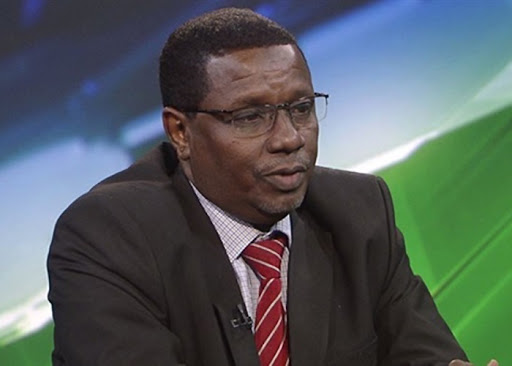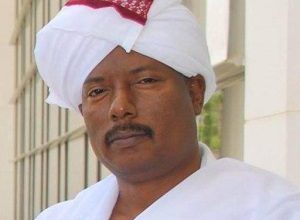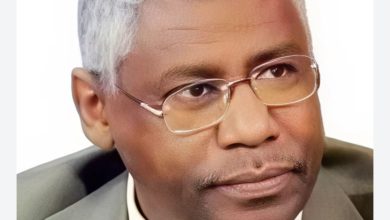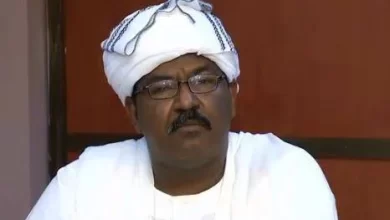DRC Conflict Threatens Fragile Stability in the Great Lakes

By: Atta Al-Mannan Bakhit
Regardless of the doubts raised about the credibility of the results of the elections that took place early this year in which President Felix Tshisekedi won a second presidential term, the success of the elections in and of themselves in a turbulent country like the Democratic Republic of the Congo is considered an important victory for democracy and the reinforcement of a commendable political practice based on the peaceful transfer of power.
The Democratic Republic of Congo is living in a frustrating reality that embodies the crisis of the modern African state, which began wrongly, and whose leadership suffered from a shallow vision that prevented it from properly exploiting and managing the enormous resources it enjoys.
It is a country that carries within it bounties that are rarely found in any other country in the world, but this excessive internal wealth in the interior of the earth is matched by extreme poverty on the surface of the earth, embodied in a surreal painting by the saying of the Arab poet:
“Like a camels in the desert, died by thirst… while water is carried on their backs.”
The Democratic Republic of the Congo ranks second on the continent in terms of area, after Algeria, and fourth on the continent in terms of population after Nigeria, Egypt and Ethiopia, but it is ahead of all the countries of the continent in terms of natural resources of precious metals such as cobalt, as the Congo monopolizes more than half of the world’s production of this precious metal, gold and copper, in addition to oil, vast forest wealth, and huge reserves of water.
All these riches could make it one of the richest and most prosperous countries in the world, but on the contrary, the Democratic Republic of Congo ranks fifth on the list of the poorest countries in the world, and seventh in the world in terms of insecurity, due to the multiple hotspots of internal and regional conflicts, and the weakness of the central state, which has led in turn leads to entrenched corruption and mismanagement.
History of unrest
The history of the Democratic Republic of the Congo is a series of successive political and military disturbances and conflicts, which are fueled by the ethnic dimension and intellectual disparity that were kindled by the central powers, or the major powers in the world. The roots of all these conflicts go back to international and regional competition over the enormous resources of this charming country, whose wealth has become a setback and a curse on it.
The era of Belgian colonization of the Congo was one of the worst pages in the history of this afflicted country. In fact, the Congo was more than a colony. King Leopold II considered it his private estate, and harnessed its enormous resources to maximize his personal wealth. However, the post-independence period was not better, as the struggle raged between the East and the West to control the country, and it was a merciless struggle that led to the well-known Congolese revolutionary Patrice Lumumba being killed in 1961.
The country entered a phase of internal fighting that ended with General Mobutu Seseko’s rise to power and his absolute rule of the country that lasted for more than thirty years. Since the beginning of the 1990s, the Mobutu regime’s grip on power weakened, and the first Congolese war began, which ended with the overthrow of the Mobutu regime and Laurent Kabila assuming power in 1997.
The regime of President Kabila Sr. the father did not last long due to the change in regional alliances and the complications of the bloody ethnic conflict in Rwanda, which led to the renewal of the Congolese war for a second time, in which President Kabila himself was killed in the year 2001, and his son, Joseph Kabila, assumed power.
The Second Congo War practically continued until 2004, when regional understandings between the Congo’s neighboring countries, particularly Rwanda, Uganda, and Angola, led to the signing of a peace agreement that allowed for the organization of elections that brought Joseph Kabila Jr. to power.
In 2018, elections took place, the validity of which also raised many questions. They brought the current president, Felix Tshisekedi, to power. It was the first time in the political history of the Democratic Republic of the Congo, in which power was smoothly transferred from an elected president to an elected president.
A return to the roots of the conflict
The current conflict in the Democratic Republic of the Congo, which has developed to include the entire Great Lakes region, is closely linked to the Rwandan war in 1994, which was known as the Tutsi massacre, in which Hutu revolutionaries – in the worst wave of ethnic revenge the continent has ever known – killed more than a million Tutsis with unparalleled brutality. In addition to this war, there are other important wars, which are the civil war in neighboring Burundi, which is ruled by a Hutu majority, as well as the long war in Uganda, which began from the presidency of General Idi Amin, until the current president, Yoweri Museveni, came to power in 1985.
Other wars in the region also contributed to varying degrees in fueling the conflicts in the Great Lakes, namely the Angolan war, the war in neighboring Central Africa, and the long war in South Sudan. All these raging wars turned the Great Lakes into a highly flammable powder keg.
The victory of the Rwandan Patriotic Front, led by current President Paul Kagame and others, in the Rwandan war, and control of the capital, Kigali, led to the migration of more than a million Hutus to the eastern Congo region, where they were stationed in North and South Kivu states, and formed armed movements to attack the Rwandan army.
These movements used violence and force to control gold, diamond, cobalt, and other mines, and used their revenues to buy weapons and pay the heavy war bill. Competition and greed among leaders and the desire to control money and resources led to the endless proliferation of movements until the number of armed movements in the Congo exceeded one hundred movements.
The armed movements in the Congo have established political alliances with the countries of the region, particularly with Rwanda and Kenya, and to a lesser extent with Uganda, which has disturbed the political relations between these countries and the Democratic Republic of the Congo.
The most important of these alliances is the alliance of the Congolese M23 armed movement with the Republic of Rwanda. This movement is considered the largest and most active armed movement currently, and the majority of its fighters are Congolese Tutsis. Because of this, this movement finds great support from the Rwandan government.
In fact, the Rwandan government’s support for the M23 movement is no longer hidden, to the point that France officially asked the Rwandan government to stop its support for this movement, and the Congolese government denounced more than once Rwanda’s continued support for this movement.
This situation led to a worsening of relations between Rwanda and the Democratic Republic of the Congo, and reached the stage of severing diplomatic relations between the two countries. Given the activity of this movement’s fighters and their repeated targeting of the Congolese army, which is burdened by the wounds of long wars, the relationship between Rwanda and the Congo is likely to deteriorate further.
President Tshisekedi’s anger against Rwanda seems to have reached such an extent that he stated in one of his campaign speeches that if Rwanda continues to support the M23 terrorist movement, the Congolese army will not hesitate to invade Rwanda.
Perhaps this dangerous statement is just an election promise that will not be implemented, and so we hope, but such statements reveal the extent of the deterioration of relations between the two countries, and add more fuel to the fire of hostility raging between the two sides. But President Tshisekedi returned last February to repeat his same threat to Rwanda, after the major attacks launched by the M23 movement on garrisons and population centers in his country, which indicates that relations between the Democratic Republic of the Congo and Rwanda are likely to further escalate, which may reach the stage of armed confrontation. .
As for neighboring Kenya, its relations with the Democratic Republic of the Congo are also likely to deteriorate further, as expressed by Nairobi withdrawing its forces participating in the African Peace Support Force in eastern Congo. The hostility between the two countries took a turn for the worse when Kenya allowed a meeting of the Congolese opposition to be held in the capital, Nairobi, which ended with the announcement of the establishment of the Congo River Alliance, a political-military alliance directed against the government of President Tshisekedi.
The objectives of the new coalition clearly reveal that it could use the military option against the government of President Tshisekedi. Thus, the Congolese president begins his second term in light of deep internal complications, apparent regional isolation, and real crises that require one match to explode throughout the region.
Challenges of economic reform
President Tshisekedi is keen to complete the social and economic reforms he initiated in his first term; In order to address the major internal challenges in Congolese society. In the first session, it implemented a policy of free public education, reducing poverty, and expanding the scope of basic services. But these reforms require large resources to bear fruit, and in light of the rampant corruption in all aspects of the state, it will be very difficult to provide financial resources for social reform.
The Congolese President adopts an economic reform and renaissance program based on two important axes: increasing investments in the mineral sector, which is considered the main lever of the country’s economy.
In this field, at the end of last year, he succeeded in signing an important agreement with the United Arab Emirates to pump $1.9 billion into the Congolese mining sector, making the UAE the second investor in the field of minerals after China.
The Congolese President continues his dialogue with China, the largest partner and investor, with the aim of raising the state’s share of the returns of Chinese companies’ investments in the field of minerals, which exceed six billion dollars. On the other hand, the President continues his program to develop and modernize road infrastructure, especially the roads linking his country to the countries of the region that are at peace with it, namely Tanzania and Angola, in order to enhance intra-trade after his country became the seventh member of the Economic Community of East African States.
Despite all this, the question remains about the effectiveness of these measures in achieving their goals, and to what extent can the fragile democracy in the Democratic Republic of the Congo withstand the armed rebellion movements that are multiplying every day?
To what extent can the countries of the region repair the deteriorating relations between the Democratic Republic of the Congo and Rwanda, to reduce the intensity of the Congolese armed movements and prevent the entire Great Lakes region from turning into an arena of comprehensive confrontation in a region that represents the corner of the conflict-stricken African continent?’



